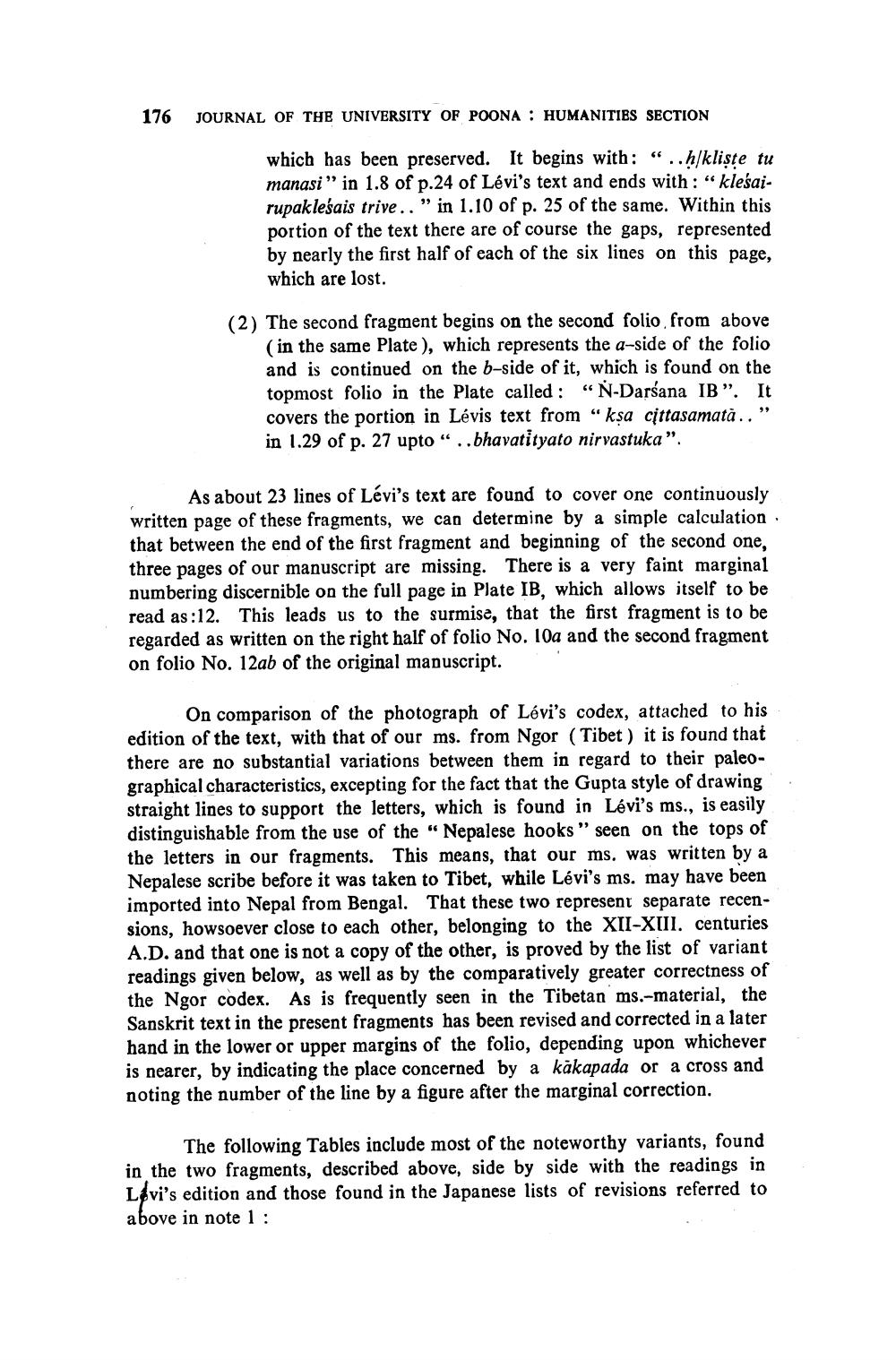Book Title: Fragments Of Sthiramatis Trimsikavijnaptibhasya In Patna Ccollection Of Tibetan Manuscript Materials Author(s): V V Gokhale Publisher: V V Gokhale View full book textPage 2
________________ 176 JOURNAL OF THE UNIVERSITY OF POONA HUMANITIES SECTION which has been preserved. It begins with: " ..h/kliste tu manasi" in 1.8 of p.24 of Lévi's text and ends with: "kleśairupaklesais trive.. " in 1.10 of p. 25 of the same. Within this portion of the text there are of course the gaps, represented by nearly the first half of each of the six lines on this page, which are lost. (2) The second fragment begins on the second folio, from above (in the same Plate), which represents the a-side of the folio and is continued on the b-side of it, which is found on the topmost folio in the Plate called: "N-Darśana IB". It covers the portion in Lévis text from "kṣa cittasamatā.." in 1.29 of p. 27 upto "..bhavatityato nirvastuka". As about 23 lines of Levi's text are found to cover one continuously written page of these fragments, we can determine by a simple calculation. that between the end of the first fragment and beginning of the second one, three pages of our manuscript are missing. There is a very faint marginal numbering discernible on the full page in Plate IB, which allows itself to be read as:12. This leads us to the surmise, that the first fragment is to be regarded as written on the right half of folio No. 10a and the second fragment on folio No. 12ab of the original manuscript. On comparison of the photograph of Lévi's codex, attached to his edition of the text, with that of our ms. from Ngor (Tibet) it is found that there are no substantial variations between them in regard to their paleographical characteristics, excepting for the fact that the Gupta style of drawing straight lines to support the letters, which is found in Lévi's ms., is easily distinguishable from the use of the "Nepalese hooks" seen on the tops of the letters in our fragments. This means, that our ms. was written by a Nepalese scribe before it was taken to Tibet, while Lévi's ms. may have been imported into Nepal from Bengal. That these two represent separate recensions, howsoever close to each other, belonging to the XII-XIII. centuries A.D. and that one is not a copy of the other, is proved by the list of variant readings given below, as well as by the comparatively greater correctness of the Ngor codex. As is frequently seen in the Tibetan ms.-material, the Sanskrit text in the present fragments has been revised and corrected in a later hand in the lower or upper margins of the folio, depending upon whichever is nearer, by indicating the place concerned by a kakapada or a cross and noting the number of the line by a figure after the marginal correction. The following Tables include most of the noteworthy variants, found in the two fragments, described above, side by side with the readings in Levi's edition and those found in the Japanese lists of revisions referred to above in note 1:Page Navigation
1 2 3 4 5
